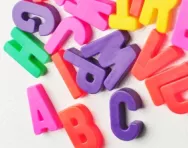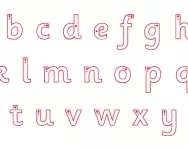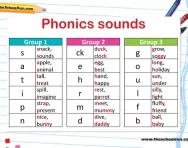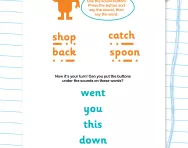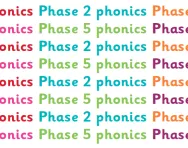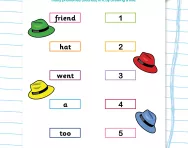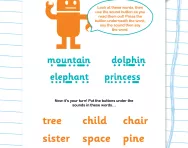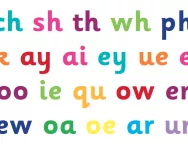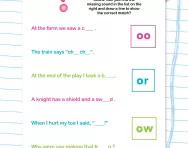Important update from TheSchoolRun
For the past 13 years, TheSchoolRun has been run by a small team of mums working from home, dedicated to providing quality educational resources to primary school parents. Unfortunately, rising supplier costs and falling revenue have made it impossible for us to continue operating, and we’ve had to make the difficult decision to close. The good news: We’ve arranged for another educational provider to take over many of our resources. These will be hosted on a new portal, where the content will be updated and expanded to support your child’s learning.
What this means for subscribers:
- Your subscription is still active, and for now, you can keep using the website as normal — just log in with your usual details to access all our articles and resources*.
- In a few months, all resources will move to the new portal. You’ll continue to have access there until your subscription ends. We’ll send you full details nearer the time.
- As a thank you for your support, we’ll also be sending you 16 primary school eBooks (worth £108.84) to download and keep.
A few changes to be aware of:
- The Learning Journey weekly email has ended, but your child’s plan will still be updated on your dashboard each Monday. Just log in to see the recommended worksheets.
- The 11+ weekly emails have now ended. We sent you all the remaining emails in the series at the end of March — please check your inbox (and spam folder) if you haven’t seen them. You can also follow the full programme here: 11+ Learning Journey.
If you have any questions, please contact us at [email protected]. Thank you for being part of our journey it’s been a privilege to support your family’s learning.
*If you need to reset your password, it will still work as usual. Please check your spam folder if the reset email doesn’t appear in your inbox.
What are phonemes?
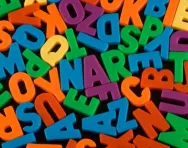
Contents:
What is a phoneme?
Examples of phonemes
Phonemes in Reception and KS1
Practical phonemes practice
Phoneme activities at home
Phoneme FAQs
What is a phoneme?
Examples of phonemes
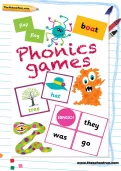
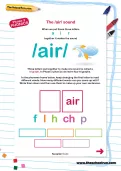
Complete 'at-home' phonics support kit
- Step-by-step phonics programme
- Your guide to phonics
- Worksheets & games
Phoneme learning in Reception and KS1
Children will be taught the individual sounds of each letter of the alphabet in Reception. They will then start to put these sounds together, to make short words, such as: cat, nap, pin, tap, etc. This is called blending sounds. In alphabetic writing systems, written symbols correspond to phonemes, forming the foundation of reading and writing.
They will learn that each of these words have three distinct sounds (phonemes). For example, cat has the three sounds: /c/ /a/ and /t/.
In phonics we learn to read the "pure sound" of a phoneme, rather than letter names. For example, the sound /s/ is pronounced 'ssssss' and not 'suh' or 'es'. Learning to read pure sounds makes it much easier for children to blend sounds together as they progress with their reading.
They will also move onto words containing consonant clusters (two consonants placed together) such as trap (tr is a consonant cluster) or bump (mp is a consonant cluster). Both of these words each contain four phonemes as although consonant clusters involve letters being 'clustered' together, you can still hear the two separate sounds.
They will then start to learn that a word could have a sound in it that is made up of two letters, for example:
boat
is made up of three phonemes: /b/ at the start, /oa/ in the middle and /t/ at the end.
The middle sound /oa/ is made up of two letters, so this is called a digraph. A digraph is a phoneme (single sound) that is made up of two letters. The digraph above, /oa/, is a vowel digraph, because it is made up of two vowels.
A digraph could be made up of consonants, for example:
chip
The /ch/ in chip is a consonant digraph, where the two letters make up one single phoneme.
A single sound can also be made up of three letters, and this is called a trigraph. For example:
light
The /igh/ in this word is one sound that is made up of three letters, so this is a trigraph.
Practical phonemes practice
Children will often be asked to split words up into sounds (they may not need to use the word phoneme). For example, if they can't read the following word:
train
they may be asked to sound it out, possibly underlining the sounds /t/ /r/ /ai/ /n/ so they are made aware of how to split a word up to be able to say the sounds out loud.
They may also be given word cards or interlinking cubes that have individual phonemes on them and then be asked to make them into words.
For example: they may be given the following cards:
| f | r | b |
| n | t | s |
| ai | oo | ea |
With these cards they can make a variety of words, such as fair, brain, rain, train, stain, boot, foot, root, soot, fear, bear, tear. Children gradually learn that letters and pairs or groups of letters (graphemes) do not always make the same sound. For example: 'ea' makes one sound in 'fear' and another 'bear'.
Fun activities for learning phonemes at home
Here are some fun activities to help your child understand phonemes and embed their learning at home:
Phoneme FAQs
FAQ 1
Q: What is a phoneme?
A: A phoneme is the smallest unit of sound in a language that can change the meaning of a word. For example, the phonemes /c/ and /b/ differentiate the words cat and bat.
FAQ 2
Q: How many phonemes are there in the English language?
A: There are approximately 44 phonemes in the English language, which include both vowel and consonant sounds.
FAQ 3
Q: Why are phonemes important for learning to read?
A: Phonemes are crucial for reading because understanding them helps children decode words by sounding them out. This phonemic awareness is a foundational skill for effective reading and spelling.
FAQ 4
Q: What is the difference between a phoneme and a letter?
A: A phoneme is a sound, whereas a letter is a written symbol. For example, the word ship has four letters (s, h, i, p) but three phonemes (/sh/, /i/, /p/).
FAQ 5
Q: Can a single phoneme be represented by more than one letter?
A: Yes, a single phoneme can be represented by a combination of letters. For example, the phoneme /sh/ in ship is represented by the letters s and h together.
FAQ 6
Q: How can parents help their children learn phonemes?
A: Parents can help their children learn phonemes by reading aloud to them, playing phonemic awareness games, practicing sound-letter correspondence, and encouraging them to sound out words during reading and writing activities.
FAQ 7
Q: What role do phonemes play in speech therapy?
A: In speech therapy, phonemes play a crucial role in diagnosing and treating speech and language disorders. Therapists work with clients to improve their articulation and phonemic awareness, helping them produce correct sounds and understand sound patterns within words.


